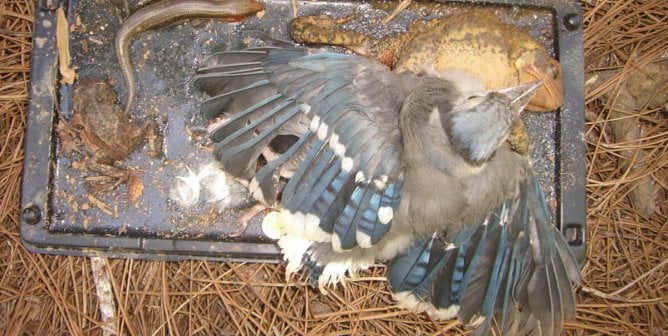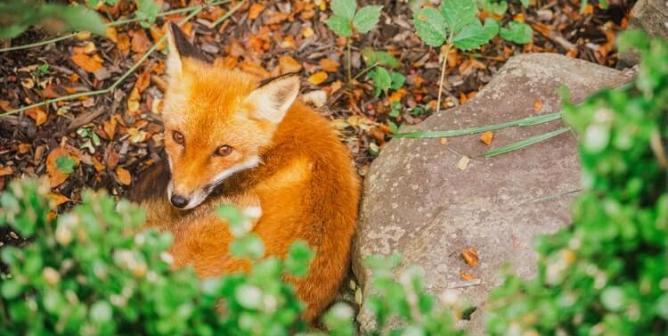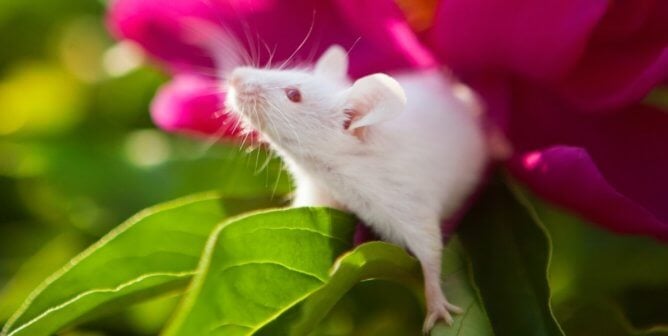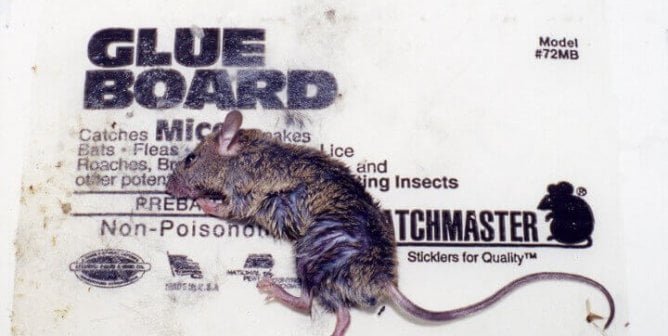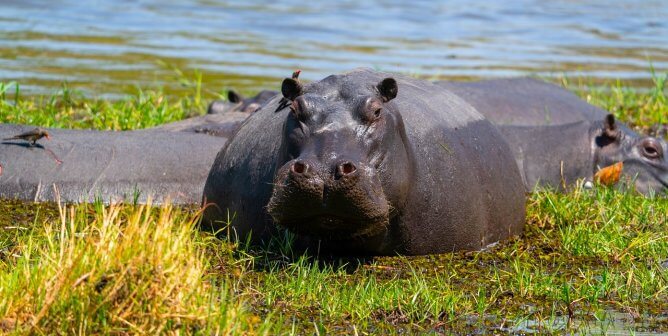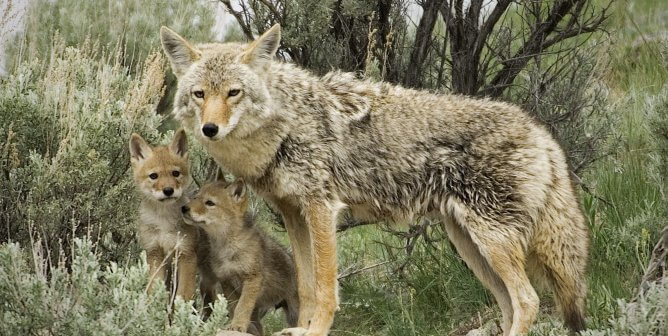Living in Harmony With Nature
The wild animals you see in your backyard aren’t trespassing—it’s their home too. As humans increasingly move into animals’ habitats, we can unwittingly cause our wild animal neighbors far more trouble than they cause us. Here are some ways to live in harmony with them.
Cap Your Chimney
When birds sit on top of chimneys for warmth, they can inhale toxic fumes—if the chimney is uncapped, they can fall in and die. Many raccoons nest in chimneys. If you hear mouse-like squeals from above your fireplace damper, chances are they’re coming from baby raccoons. Don’t light a fire—you’ll burn them alive. Just close the damper securely and do nothing until the babies grow older and the family leaves. When you’re absolutely sure that everyone’s out, have your chimney professionally capped—raccoons can quickly get through amateur cappings. Also, a mother raccoon or squirrel will tear apart your roof if you trap one of her young inside your chimney.
Make Some Noise
If for some reason you must evict an animal family before it is ready to leave on its own, put a radio tuned to loud talk or rock music in the fireplace and hang a mechanic’s trouble light down the chimney. (Animals like their homes dark and quiet.) Leave these in place for a few days to give mom time to find a new home and move her children. You might also hang a thick rope down the chimney, secured at the top, in case your tenant can’t climb up the slippery flue. If the animal still cannot get out, call your animal control bureau for the name of a state-licensed wildlife rehabilitator. Don’t entrust animals’ lives to anyone else, especially not to “pest removal services.”
Give ‘Em a Leg Up and a Way Out
Uncovered window wells, pools, and ponds trap many animals, from salamanders to muskrats to kittens. To help them climb out, lean escape planks of rough lumber (to allow for footholds) from the bottom to the top of each uncovered window well and place rocks in the shallow ends of ponds and pools to give animals who fall in a way to climb out. Also, a stick in the birdbath gives drowning insects a leg up. If a wild bird or bat is in your house, wait until dark and then open a window and put a light outside it. Turn off all inside lights. The animal should fly out toward the light.
Make Your House Unappealing
Denying mice and rats access to food in your home will do the most to discourage them from taking up residence there. Do not leave dog and cat food out for long periods of time. Store dry foods such as rice and flour in glass, metal, or ceramic containers rather than paper or plastic bags. Seal small openings in your home. One PETA member drove mice from her cupboards by putting cotton balls soaked in peppermint oil in them.
Relocating animals by trapping them with a humane trap doesn’t always work, since animals may travel long distances to get back home. Also, you may be separating an animal from loved ones and familiar food and water sources. It is far better and easier to use one of the above methods to seal up openings and encourage animals to relocate themselves. If you must trap an occasional rodent, use a humane live trap. Check traps often, to prevent animals from dying of starvation and dehydration. If the trap is made of plastic, make sure it has air holes.
Garbage Dump Dangers
Animals die tragically when they push their faces into discarded food containers to lick them clean and get their heads stuck inside, so when you recycle, do the following:
- Rinse out each tin can, put the cover inside so that no little tongues will get cut, and crush the open end of the can as flat as possible.
- Cut open one side of empty cup-like containers; inverted-pyramid yogurt cups have caused many squirrels’ deaths.
- Cut apart all sections of plastic six-pack rings, including the inner diamonds.
- Choose paper bags at the grocery store, and use only biodegradable or photodegradable food storage bags.
Be sure that any garbage cans are covered—baby opossums and others can fall in and not be able to climb out. If animals are tipping over your trash can, store it in a garage or make a wooden garbage can rack. Trash can lids with clasps sometimes foil animals. Another solution is to place a small bag of “goodies” beside your garbage can each night: Your midnight raiders will likely leave the garbage alone.
Cats, raccoons, opossums, and other animals sometimes climb into large Dumpsters and cannot climb out because of the slippery sides. Therefore, every Dumpster should have a vertical branch in it so that animals can escape. Ask your local park district to put branches in park Dumpsters.
Wild Animals Make Good Neighbors
A single bat can catch up to 1,000 mosquitoes in an hour, so many people encourage them to settle in their yards by building bat houses.1 Contrary to myth, bats aren’t blind, they won’t get entangled in your hair, and most do not have rabies.2 If one comes into your home, turn off all lights and open doors and windows. Bats are very sensitive to air currents. If the bat still doesn’t leave, catch him or her very gently in a large jar or net. Always wear gloves if you attempt to handle a bat, and release the animal carefully outdoors. Then find and plug the entrance hole.
Moles and gophers are actually good for the yard, because they help to aerate lawns and eat the grubs who damage grass and flowers. Raccoons and opossums also eat plant-damaging grubs, slugs, and rodents. Studies suggest that beavers help to preserve aquatic and wetland environments.3
Snakes are timid, most are harmless, and they can help control the mouse and insect population. But if you’d prefer that they keep their distance, stack wood or junk piles far from the house, as snakes prefer this type of cover. While most snakes are of the nonpoisonous variety, your library can tell you how to identify any poisonous snakes in your area.
Keep in mind that leaving companion-animal food on the ground or keeping bird feeders can be an invitation to both rats and snakes. Consider planting bushes that will give birds a variety of seeds and berries instead.
Orphaned or Sick Animals
Wild youngsters are appealing, but never try to make one your animal companion. They are happiest with others of their kind. If you tame one, when the time comes for release, the animal will not know how to forage for food or be safe in the woods. If you find a youngster who appears orphaned, wait quietly at a distance for a while to be certain that the parents are nowhere nearby. If they do not show up within a few hours, take the little one to a trained wildlife rehabilitator for care and eventual release.
Most baby birds found on the ground are fledglings. Mom and dad are usually hovering nearby and coming down often to feed the baby. It’s a myth that parents will reject baby birds who have been handled by humans. You can create a “nest” for the baby by nailing a small box filled with bedding material to a tree trunk—the parents will visit it to feed the baby.
Normally, nocturnal adult animals seen in daytime should be observed—if they run from you, chances are that they are healthy. If they are lethargic, walk slowly, or stagger, they may be sick. While not all sick animals have rabies (many have distemper, which is not contagious to humans), do not approach sick animals. Instead, call animal control or a wildlife rehabilitator. Before you allow anyone to take an animal away, make sure that severely ill or injured animals will be humanely euthanized.
Your local humane society or park authority should have names and telephone numbers of wildlife rehabilitators. Keep the numbers in your home and car in case of an emergency.
Create a Backyard Habitat
A chemical-free lawn, like a tree, detoxifies the air, removes pollutants, and brings better health to four- and two-legged property users. The unseen underground activity of worms and microorganisms helps make lawns healthy. Allowing this biological activity to go on, unharmed by pesticides, causes roots to become stronger, making chemical fertilizers unnecessary. For birds and small mammals, dead trees and stumps are ecological gold. Many animals—nuthatches, woodpeckers, squirrels, raccoons, bluebirds, owls, chickadees, wood ducks, and wrens—nest in them and feed on their insect tenants.
Top off—don’t chop down—dead trees 12 inches or more in diameter. Remember to check for nests and dens first. Leave plenty of bushes for wildlife cover. Keep a birdbath filled with water—and for small mammals, a pan—and use heating elements to prevent them from freezing in the winter.
References
1 Sarah Farmer, “It‘s bat time,” U.S. Department of Agriculture, 25 Oct. 2022.
2 National Center for Infectious Diseases, “Information for Veterinarians,” Centers for Disease Control and Prevention, 20 June 2024.
3University of Minnesota, “Beavers support freshwater conservation and ecosystem stability,“ Phys.org, 4 Jan. 2022.

